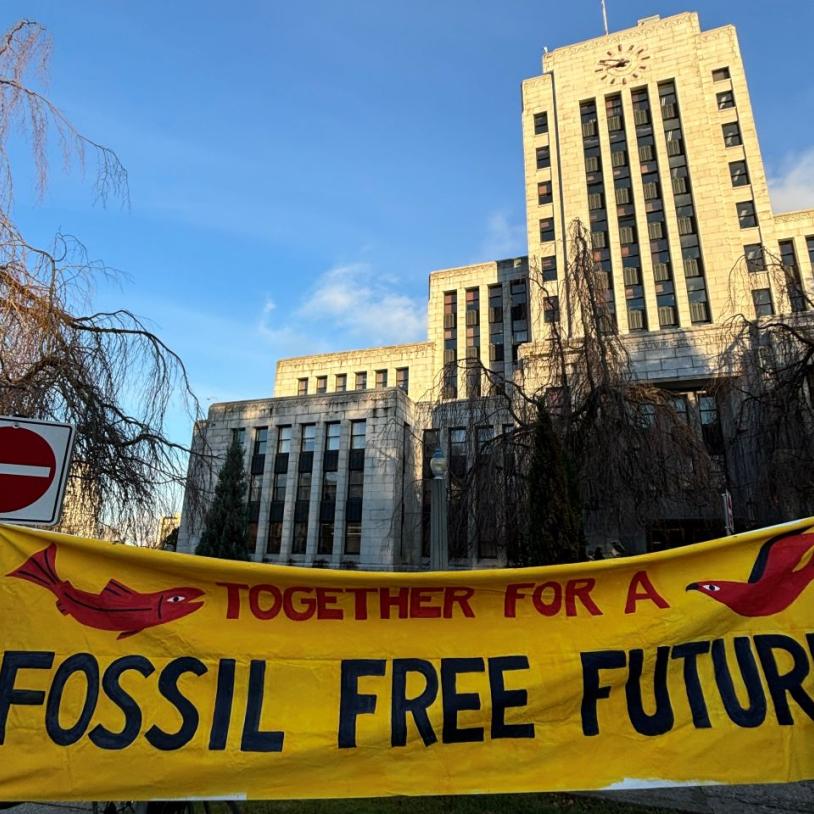Fate of Peace River Valley hangs in the balance on upcoming Site C recommendation
Tuesday, May 6, 2014
News Release - May 6, 2014
Farmers, First Nations and BC ratepayers await review panel report
VANCOUVER/FORT ST. JOHN – British Columbians could know the fate of the Peace Region and their electricity bills as early as this Thursday, May 8th. The provincial and federal governments are expected to release the report from the expert panel appointed to assess and recommend whether the controversial Site C dam should be approved.
With a projected cost of at least $8 billion and a reservoir that would flood 107 kilometres of the Peace River and its tributaries, Site C is widely opposed by BC farmers, First Nations, conservation groups and residents of the Peace.
“A great deal hangs in the balance,” said Joe Foy, National Campaign Director with the Wilderness Committee. “There is certainly no need for this expensive power, and the damage the Site C dam would do to farmland and First Nations’ territories is appalling,” he said.
On May 1st, the Canadian Environmental Assessment Agency (CEAA) announced that the panel handed its report to federal Environment Minister Leona Aglukkaq and the BC Environmental Assessment Office. The BC and federal governments now have six months to make a final decision about whether or not to approve Site C, although a decision could come earlier.
If built, the Site C dam would impact over 31,528 acres of some of BC’s most important agricultural land, constituting the largest loss of farmland in the history of the province’s Agricultural Land Reserve. The dam’s $8 billion price tag would be shouldered by BC Hydro ratepayers, who would see an additional round of rate increases to pay for the costliest infrastructure project BC Hydro has ever built.
At environmental assessment hearings last December, experts argued that the dam would not be needed to fill BC’s energy needs for decades, if ever. In fact, it would add to a glut of electricity, putting the province in an energy surplus situation for years.
“The 1,100 MW capacity of Site C will result in an oversupply of energy for many years after it is commissioned,” states economist Dr. Marvin Shaffer. “BC Hydro didn’t provide appropriate cost comparisons to alternative sources of power in their analysis. Clearly, if alternative sources of energy were used, they could be constructed on an incremental, as-needed basis, thus resulting in significant cost savings over time. We wouldn’t end up with a huge initial surplus of power for many years like we would with Site C.”
The dam would have a myriad of large-scale environmental and social impacts. It would destroy farmlands and homes that have been in the same families for generations. First Nations, whose traditional territories are already suffering significant impacts due to oil and gas development, are keen to protect the Peace Valley, the ‘jewel of the north’. The valley-bottom lands of the Peace River Valley contain burial grounds, ancient village sites and sacred areas as well as critical wildlife habitats – all of which will be lost if the project is allowed to proceed.
“The families of First Nations and farmers in the Peace River area would feel the effects of the Site C dam most directly,” said Andrea Morison of the Peace Valley Environment Association. “I know of individuals and families who will leave the area if this dam proceeds. They couldn’t stomach seeing the valley destroyed, and they don’t want to be part of a community where an influx of close to 2,000 temporary workers rolls in, placing completely unmanageable stress on our health care services, which are already in a critical situation.”
“The ability of grizzly bears, caribou and other sensitive large mammals to live in the Peace region is already severely constrained by industrial development,” said Sarah Cox of the Yellowstone to Yukon Conservation Initiative (Y2Y). “Site C will make the problem worse, and some species could disappear from the region altogether.”
“The weather and soil conditions in the Peace Valley are perfect for growing heat-loving fruits and vegetables such as cantaloupes, peppers and tomatoes, with higher yields than in the Okanagan,” said Tim Pearson of Sierra Club BC. “As global warming forces drought-stricken California to cut back on those crops, it makes no sense to destroy land that is capable of producing fruits and vegetables for more than a million people.”
Opponents of the Site C dam are planning two large public events to show support for protecting the Peace River Valley. A festival celebrating Peace River Valley farmland is planned for Vancouver on Saturday, June 14 and the 9th Annual Paddle for the Peace event is planned for Fort St. John on Saturday July 12, 2014.
– 30 –
For more information, contact:
Joe Foy, Wilderness Committee – 604-683-8220 (office) 604-880-2580 (cell)
Sarah Cox, Yellowstone to Yukon Conservation Initiative – (250) 812-1762
Andrea Morison, Peace Valley Environment Association – (250) 793-7279
Tim Pearson, Sierra Club BC – (250) 896-1556
B-roll footage and hi-res images are available upon request.
Top photo: A sign in the Peace Region expresses opposition to the Site C dam (Graham Osborne).





